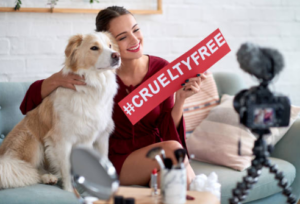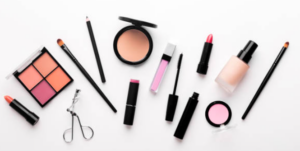A Comprehensive Analysis

The beauty industry has seen a significant shift towards ethical practices, with many consumers seeking cruelty-free products that align with their values. Cruelty-free certifications have emerged as a means to assure consumers that the products they purchase have not been tested on animals. However, as the demand for cruelty-free options grows, it’s essential to critically examine who truly benefits from these certifications – animals, companies, or consumers.
The roots of the cruelty-free movement can be traced back to the late 20th century when concerns about animal testing practices in the cosmetics industry gained public attention. Revelations about the harsh treatment of animals, including rabbits and mice subjected to painful experiments, spurred activism and calls for change.
Organizations like PETA (People for the Ethical Treatment of Animals) and the Leaping Bunny program emerged as pioneers in advocating for cruelty-free practices. Their efforts aimed to create a system that would allow consumers to identify and support brands committed to cruelty-free principles.
In response to the growing demand for cruelty-free products, certification programs were established to provide standardized criteria for evaluating a brand’s commitment to animal welfare. These programs, such as the Leaping Bunny and PETA’s Beauty Without Bunnies, introduced recognizable logos that consumers could look for when shopping for ethical beauty products.
The criteria for these certifications typically involve a thorough examination of a brand’s entire supply chain. This includes scrutinizing both finished products and their individual ingredients to ensure that no animal testing has occurred at any stage of development.
While the intention behind cruelty-free certifications is to create a global standard, the reality is more complex. Different regions have varying regulations regarding animal testing, leading to challenges in achieving a universally accepted cruelty-free status.
For instance, in China, animal testing is still a legal requirement for certain cosmetic products. This presents a dilemma for brands that aspire to be cruelty-free but also seek market access in regions with conflicting regulatory demands. The tension between adhering to cruelty-free principles and complying with local regulations underscores the need for a more coordinated global effort to ban animal testing entirely.
For the Animals: An End to Suffering?
The Progress and Limitations:
The primary motivation behind cruelty-free certifications is the humane treatment of animals, sparing them from unnecessary suffering in the name of beauty. The historical context of animal testing in the cosmetics industry paints a grim picture of rabbits, mice, and other animals subjected to painful experiments. Cruelty-free certifications strive to be a catalyst for change, pushing brands to adopt alternative testing methods and commit to a cruelty-free ethos.
While significant progress has been made, particularly in raising awareness and reducing animal testing, certain limitations persist. The global landscape presents challenges, especially in regions where animal testing is still a legal requirement.
Ethical Consumption and Consumer Influence:
The real impact of cruelty-free certifications on animals is intricately tied to consumer choices. The power dynamic shifts when consumers actively choose products that bear cruelty-free labels. As the demand for ethical options rises, companies are compelled to reevaluate their testing practices and invest in cruelty-free alternatives.
Consumer influence extends beyond individual purchasing decisions. Social media and online activism have played a pivotal role in educating and mobilizing consumers. The collective voice of consumers, expressed through petitions, social media campaigns, and boycotts, has the potential to bring about systemic change.
Legislative Advocacy and Global Collaboration:
While individual consumer choices drive change at the grassroots level, the broader impact on animals may require legislative changes and global collaboration. Advocacy groups, fueled by the momentum of the cruelty-free movement, work towards influencing governments to ban or restrict animal testing.
International collaboration is crucial in navigating global regulatory disparities. Efforts to standardize cruelty-free practices and encourage countries to adopt consistent regulations can lead to a more unified front against animal testing.

Ethical Consumption and Consumer Influence
The real impact on animals, however, hinges on the consumer’s commitment to cruelty-free values. If the demand for ethical products continues to rise, companies will be more incentivized to invest in cruelty-free research and development, ultimately benefiting animals by reducing their exposure to testing procedures.
Ethical Transformation or Market Strategy?
Critics argue that some companies may pursue cruelty-free certifications primarily as a market strategy rather than a genuine commitment to ethical practices. The beauty industry’s competitive nature has led to instances where companies adopt cruelty-free labels without eliminating animal testing throughout their entire supply chain.
To truly benefit animals, companies must go beyond acquiring certifications and actively invest in research and development of cruelty-free alternatives. Transparency becomes crucial, and consumers should be vigilant in holding companies accountable for upholding cruelty-free values beyond mere certification.
The Power of Consumer Advocacy:
Consumer advocacy, coupled with informed decision-making, can drive a deeper commitment to cruelty-free values from beauty companies. As consumers become more discerning, they play a crucial role in distinguishing between genuine commitment and superficial adherence to cruelty-free principles.
The cruelty-free movement has sparked a shift in the beauty industry’s ethos, making it imperative for companies to align with the values of their consumers. The power dynamic is clear – companies must respond to consumer demands for cruelty-free products, leading to a positive ripple effect in the treatment of animals across the industry.
For Companies: Navigating Ethical Waters
Brand Reputation and Market Access:
The beauty industry has witnessed a significant shift in consumer preferences, with more individuals choosing brands that align with their values. Cruelty-free certification not only signals a commitment to ethical practices but also opens doors to a broader consumer base seeking products that reflect their ethical stance.
Ethical Transformation or Market Strategy?
To truly benefit animals, companies must go beyond acquiring certifications and actively invest in research and development of cruelty-free alternatives. Transparency becomes crucial, and consumers should be vigilant in holding companies accountable for upholding cruelty-free values beyond mere certification.
The Rise of Greenwashing:
One challenge in the realm of cruelty-free certifications is the rise of greenwashing – a deceptive practice where companies create a false impression of environmental responsibility or ethical practices. Some brands may use cruelty-free labels as a marketing tool without fully embracing cruelty-free principles throughout their operations.
This phenomenon underscores the importance of transparency and accountability within the beauty industry. Companies that genuinely embrace cruelty-free practices must communicate their commitment clearly, providing consumers with the assurance that their choices contribute to a more ethical beauty landscape.
Industry-wide Collaboration:
To navigate ethical waters successfully, companies need to collaborate within the industry and with regulatory bodies to establish standardized guidelines for cruelty-free practices. Industry-wide collaboration can help create a level playing field and prevent greenwashing, ensuring that cruelty-free certifications genuinely reflect a brand’s commitment to ethical beauty.
The Economic Consideration:
While ethical considerations are paramount, companies must also navigate the economic landscape. Transitioning to cruelty-free practices may involve initial investments in research and development, as well as changes to the supply chain. The economic viability of cruelty-free certifications often depends on the company’s ability to balance ethical goals with financial sustainability.

Ethical Transformation and Accountability
While obtaining cruelty-free certification is a positive step, the true impact on animals and the environment lies in a company’s commitment to ethical transformation. Beyond eliminating animal testing, companies should consider broader ethical considerations, such as environmental sustainability, fair labor practices, and inclusivity.
Companies that authentically embrace cruelty-free values and communicate their commitment transparently can build trust with consumers. This trust extends beyond the cruelty-free label, encompassing a holistic approach to ethical business practices.
Consumer-Driven Ethical Transformation:
The beauty industry’s transformation towards cruelty-free practices is significantly driven by consumer demand. Companies that prioritize ethical considerations and actively engage with consumers’ values are more likely to thrive in an increasingly conscious market.
Balancing Market Strategy and Ethical Values:
As companies navigate ethical waters, striking a balance between market strategy and genuine ethical values is crucial. While a cruelty-free label can enhance market appeal, it should align with a company’s broader commitment to ethical, sustainable, and socially responsible practices.
Companies that authentically integrate cruelty-free values into their business ethos not only contribute to positive industry change but also stand to benefit from the growing market of conscious consumers.
Informed Decision-Making:
Cruelty-free certifications empower consumers by providing them with information to make more ethical choices. As consumers become increasingly conscious of the impact of their purchases, cruelty-free labels serve as a reliable indicator of a brand’s commitment to animal welfare.
The rise of social media and online activism has further amplified consumer awareness. Beauty enthusiasts share information, reviews, and recommendations, creating a community that values ethical consumption. Cruelty-free certifications, therefore, play a vital role in fostering an environment where consumers can make informed decisions aligned with their ethical beliefs.
The Potential Pitfalls of Certification Blind Trust:
While cruelty-free certifications provide valuable information, blind trust in these labels can lead to potential pitfalls. Certifications may not cover all aspects of a brand’s ethical practices, such as environmental sustainability, fair labor practices, or inclusivity. Consumers must remain vigilant and consider additional factors when evaluating a brand’s overall commitment to ethical values.

Cruelty-free certifications are a crucial step toward creating a beauty industry that prioritizes ethical practices. The benefits extend to animals, companies, and consumers, forming a triad of responsibility where each party plays a role in shaping a more compassionate future.
For animals, cruelty-free certifications symbolize a step towards minimizing suffering, although challenges persist in achieving a global ban on animal testing. Companies, whether driven by genuine ethical considerations or market strategies, contribute to a culture that values cruelty-free practices. Consumers, armed with information and empowered by their choices, act as catalysts for change, driving companies to adopt more ethical and sustainable practices.
As the beauty industry continues to evolve, the impact of cruelty-free certifications remains contingent on the collective efforts of all stakeholders. Ethical considerations must extend beyond marketing strategies, encouraging a deeper commitment to cruelty-free alternatives, transparent practices, and a holistic approach to ethical beauty.

